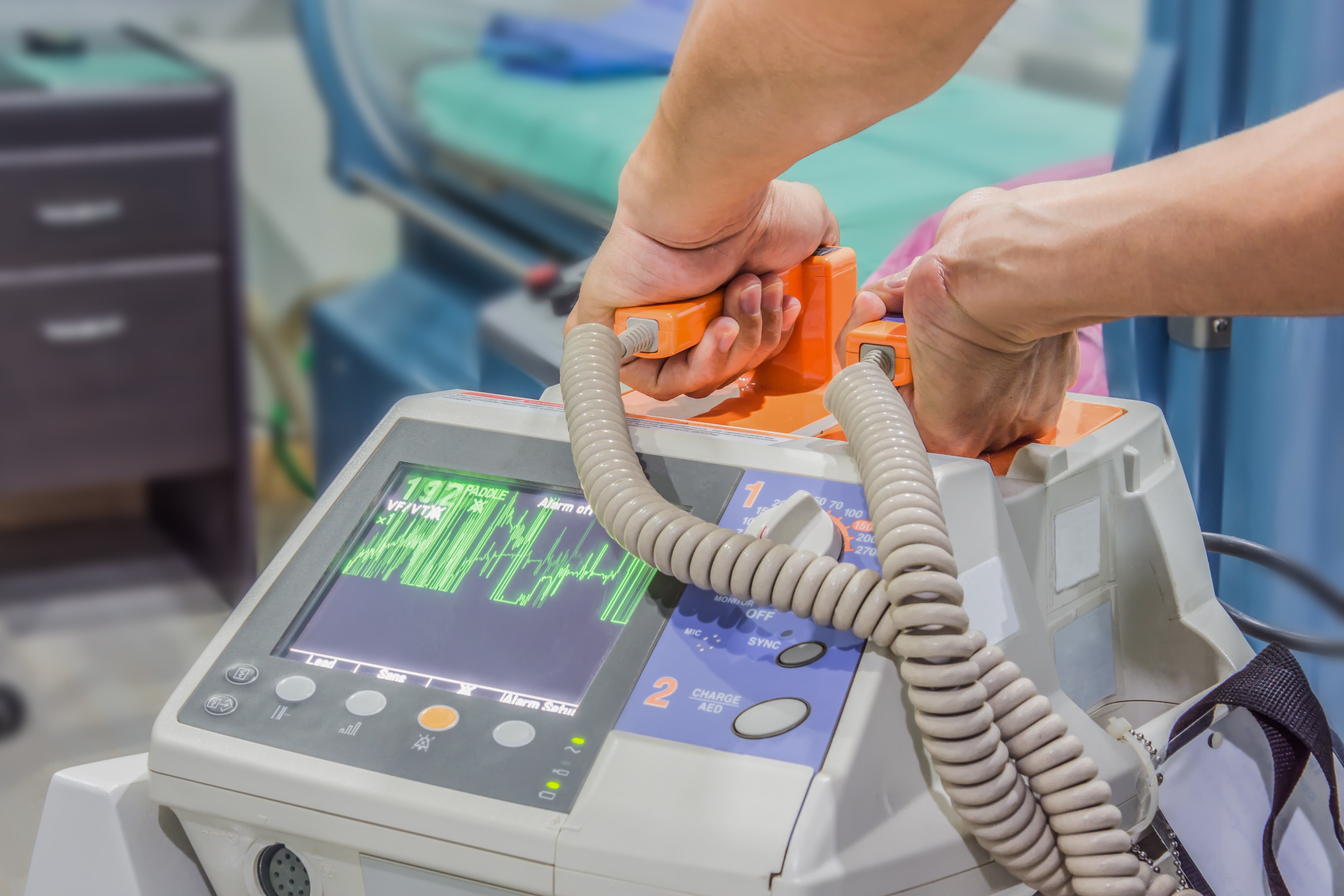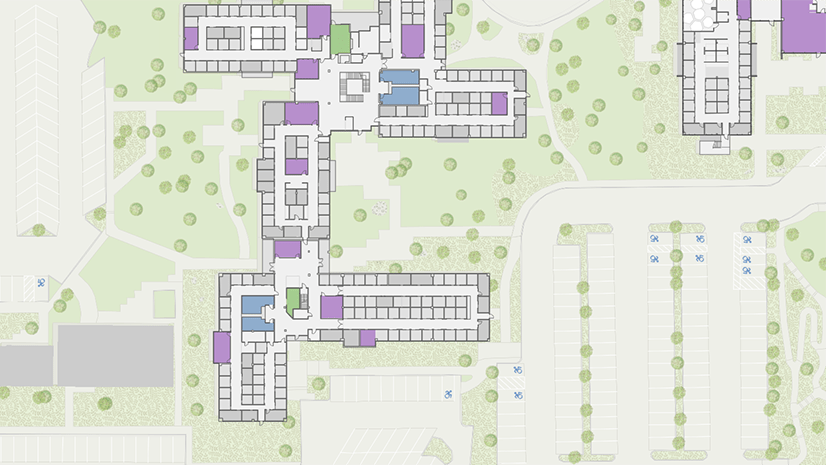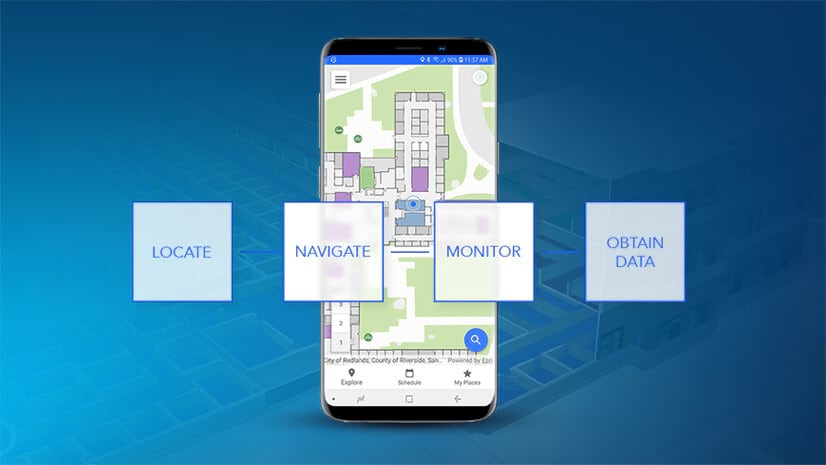The Digital Hospital
The healthcare market is drastically evolving, and that evolution creates the need for medical centers and institutions to address ongoing challenges. Indoor positioning for healthcare unlocks a number of use cases that improve operations management while simultaneously enhancing the patient experience.
The modern, digital hospital is connected. All assets, personnel and workflows can be optimally managed from one central system. By making processes paperless, they also become more lucid, providing all personnel with a common operating picture. Most importantly, however, indoor positioning improves efficiencies across the board.
Smart Hospital Resource Management
Equipment failures may literally cost life when it comes to hospitals. Wouldn’t it be great to get that weight off your shoulders and never having to worry about the risk potential faults may bring in?
To avoid both life-threatening and operational pitfalls, a system to locate and allocate valuable resources can be implemented. ArcGIS Indoors is designed to create smart workplaces, which includes effective resource planning and management.
Assets such as infusion pumps, defibrillators, and other medical equipment can be identified on the workplace map (a digital basemap which shows business information), then located and allocated accordingly.

Let’s say a patient with reduced mobility is at the hospital and waiting to be picked up for their MRI appointment. In the backend tools, medical staff will get a notification about the upcoming appointment and the task tied to it. As soon as one of the nurses accepts the task, this information will be shared in the system in real time and their status will switch from available to occupied.
Using the positioning system, they are able to identify a vacant wheelchair in close vicinity, book it and navigate to it along the route shown on the map. After getting the wheelchair, they can pick up the patient at the waiting area and take them to their MRI appointment. Once this is accomplished, the wheelchair can be returned to its original location and will show up as vacant again and the task be marked as completed.
By providing a digital and location-based management system for all assets, their utilization can be optimized. Empowered with location intelligence, personnel gets a common operating picture and can perform their tasks more efficiently.
Repair and Maintenance Management
Just as important as resource allocation and asset management is maintenance thereof. It is crucial that employees not only have quick access to equipment at all times, but also that it and all other amenities inside the facility are always in mint condition.
Think of a treatment room, where the lighting fixture is broken and dangling from the ceiling. This could impact the physicians’ working routine and has to be fixed the quickest way possible. Or imagine a waiting room with a defunct airconditioning in the heat of midsummer.
This is where positioning solutions come into play again.
Any employee who notices a defect or damage is able to report it instantly via mobile app or desktop. In case of a broken airconditioning, staff can mark the exact location of it on the digital map and add a note detailing what is wrong. The technicians will be notified about the repair request in the system, learn what they need to fix and where to find it. A route to the AC is then shown on the map and the technician can navigate there in real time. As soon as the problem is fixed, they can mark the task as resolved in the system.
This procedure makes it easier for the technical department to process requests and helps them locate incidents effortlessly. It allows all staff to keep track of task statuses and things to be repaired much faster to ensure smooth operations at all times.
Enhancing the Patient Experience
Patients are now more similar to consumers than before. This means that hospitals need to provide amenities and services that can promote business and encourage word-of-mouth propaganda.
More and more hospitals are now offering mobile apps to that allow patients to organize their visit down to the smallest details in advance. The app lets them manage their appointments, access medical files, pay bills etc. Indoor positioning compliments these features and opens the door to a whole new set of patient-enhancing use cases.
A combination of outdoor and indoor navigation makes wayfinding from garage to treatment room easy. At the hospital site, patients can park their car and save the position in the app. This serves as a memory aid to locate it instantly after their appointment. In order to also find the correct treatment room, the wayfinding feature shows their position as a blue dot and guides them there in real time via the fastest or a barrier-free route.
Efficient employees mean happy patients. There is already too much on the plate of those helping us with our healthcare, and wasting time on guiding someone through the hall to their appointment room can take a lot of valuable time away from the employees’ core duties. If all the answers could be found in a navigation app, imagine what a big breath of fresh air the information desk could get without people queuing up!
Long waiting times is one of the biggest concerns of those visiting the hospital. Nobody likes waiting, and especially in the era of digital transformation, customers set their expectations high. Monitoring patient flow in real time can give hospitals many answers to the issues that are keeping their customers unhappy.
With the data available through the navigation app, you can estimate the average waiting time per patient throughout the year and make necessary adjustments to the way appointments are scheduled.
Interested to learn more about indoor positioning solutions for hospitals? Take a look at our ArcGIS Indoors webpage or get in touch with one of our experts directly:

Ethan Franklin, Account Executive | ArcGIS Indoors






Commenting is not enabled for this article.